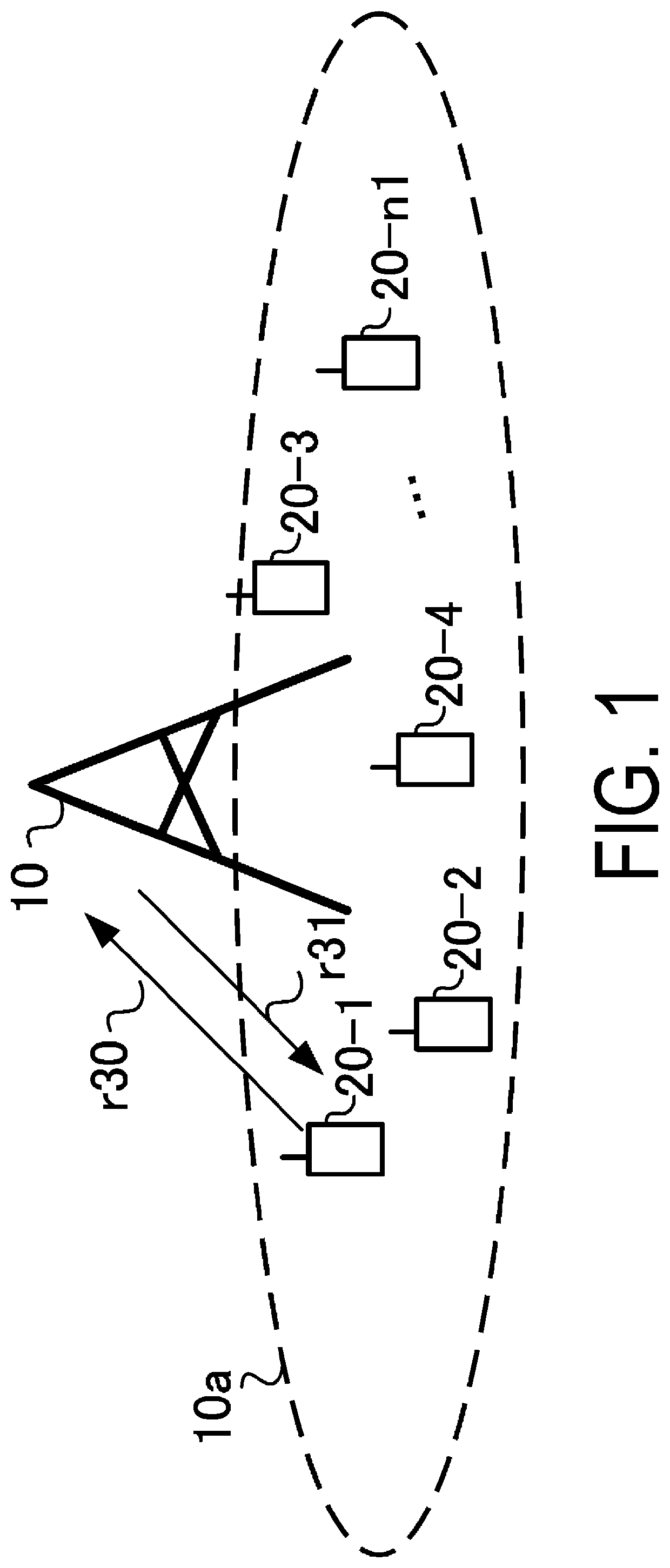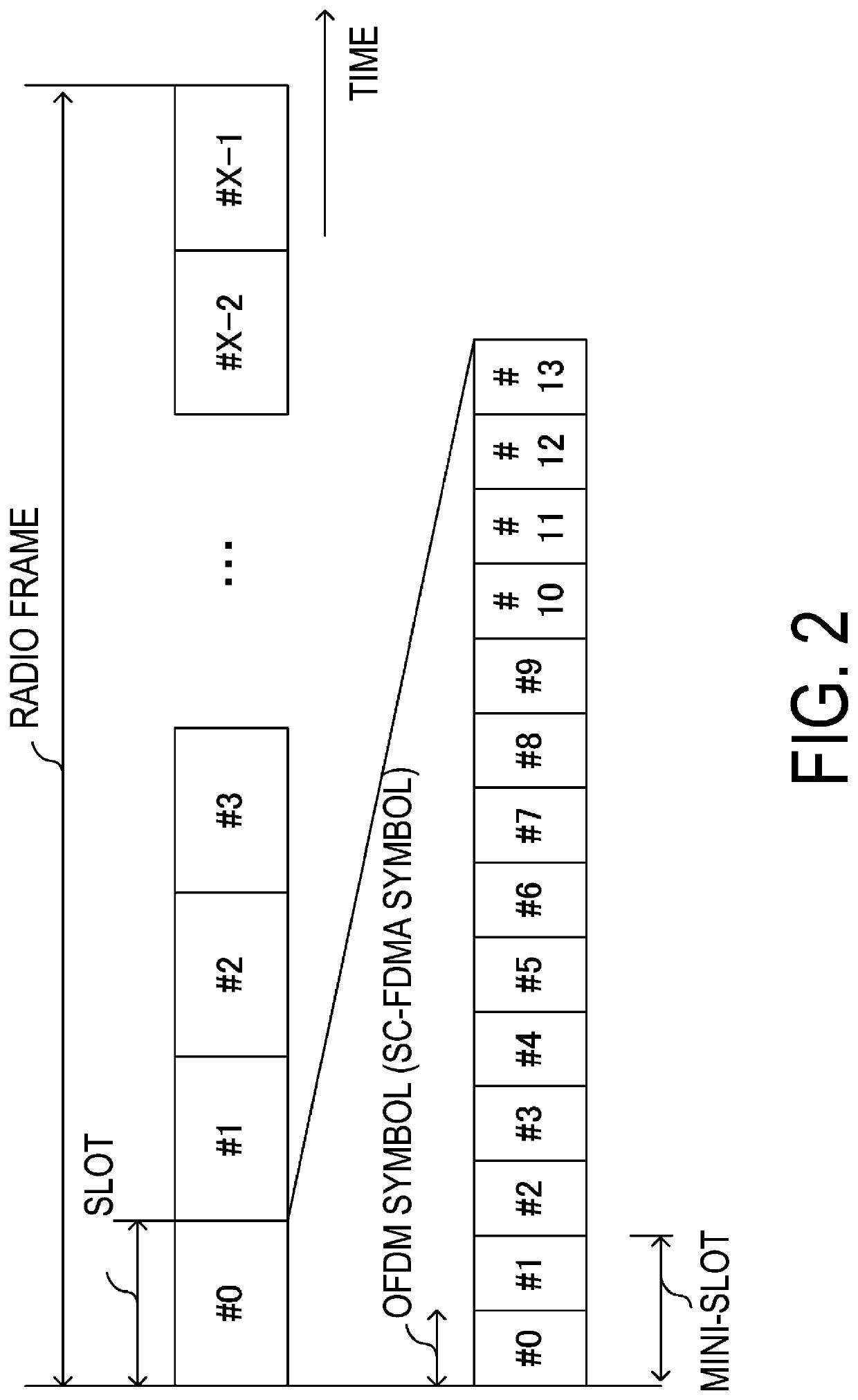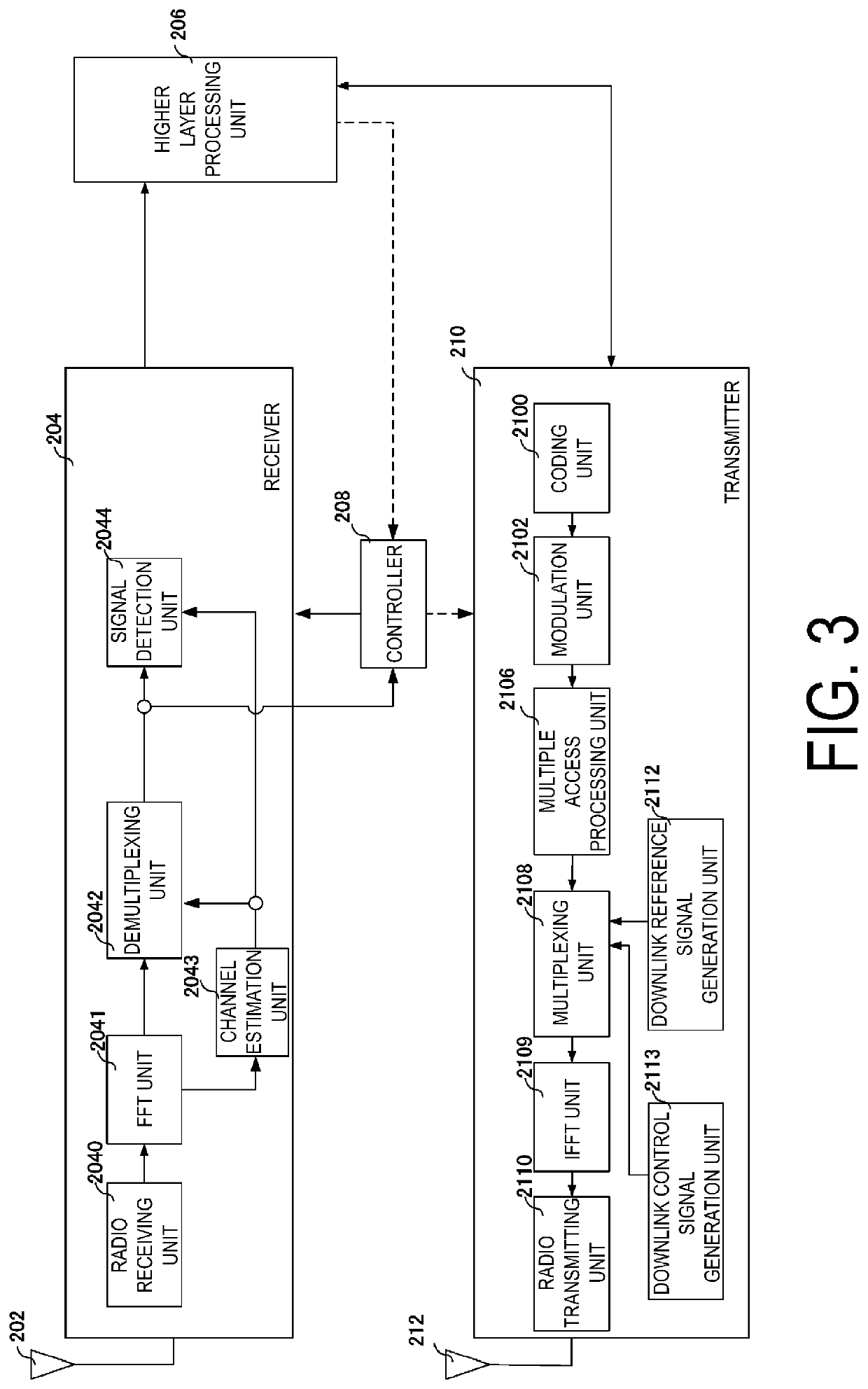Terminal apparatus and base station apparatus
a terminal and base station technology, applied in the direction of transmission path sub-channel allocation, transmission path division, wireless communication, etc., can solve the problems of increasing the delay of scheduled access, increasing the amount of control information used, and introducing mmtc, so as to achieve efficient uplink data transmission
- Summary
- Abstract
- Description
- Claims
- Application Information
AI Technical Summary
Benefits of technology
Problems solved by technology
Method used
Image
Examples
first embodiment
[0040]FIG. 1 is a diagram illustrating an example of a configuration of a communication system according to the present embodiment. The communication system according to the present embodiment includes a base station apparatus 10 and terminal apparatuses 20-1 to 20-n1 (n1 is a number of terminal apparatuses connected to the base station apparatus 10). The terminal apparatuses 20-1 and 20-n1 are also collectively referred to as terminal apparatuses 20. Coverage 10a is a range (a communication area) in which the base station apparatus 10 can connect to the terminal apparatus 20 (coverage 10a is also referred to as a cell).
[0041]In FIG. 1, an uplink radio communication r30 at least includes the following uplink physical channels. The uplink physical channels are used for transmitting information output from a higher layer.[0042]Physical Uplink Control Channel (PUCCH)[0043]Physical Uplink Shared Channel (PUSCH)[0044]Physical Random Access Channel (PRACH)
[0045]The PUCCH is a physical cha...
second embodiment
[0171]The present embodiment describes a method for specifying switching to multiple BWPs with no change in the number of information bits in the DCI format satisfying high reliability. A communication system according to the present embodiment includes the base station apparatus 10 and the terminal apparatus 20 described with reference to FIG. 3, FIG. 4, FIG. 5, and FIG. 6. Differences from / additions to the first embodiment will be mainly described below.
[0172]As a method for specifying BWPs to be used for data transmission for URLLC, the base station apparatus utilizes one or both of the RRC information and the Compact DCI format to configure scheduling of the data transmission for URLLC. In particular, the RNTIs during scheduling in accordance with the Compact DCI format are designated by configuration of the PDCCH (PDCCH-config) or configuration of the PDSCH (PDSCH-config) for configuration for each downlink BWP (BWP-Downlink) for configuration of the serving cell (ServingCellCo...
third embodiment
[0177]The present embodiment describes a method for notifying a request for switching to the BWP in accordance with the uplink control information. A communication system according to the present embodiment includes the base station apparatus 10 and the terminal apparatus 20 described with reference to FIG. 3, FIG. 4, FIG. 5, and FIG. 6. Differences from / additions to the previous embodiments will be mainly described below.
[0178]Description is given using a sequence chart of FIG. 7. In S203, the terminal apparatus receives SR resource configuration information requesting BWP switching and SR resource configuration information not requesting BWP switching. In a case that data that is not URLLC is generated, the terminal apparatus generates an SR signal in a specified PUCCH format based on the SR configuration not requesting BWP switching (S204). Here, the uplink data that is not URLLC being generated may refer to providing a transport block of data for which the higher layer is not UR...
PUM
 Login to View More
Login to View More Abstract
Description
Claims
Application Information
 Login to View More
Login to View More - R&D
- Intellectual Property
- Life Sciences
- Materials
- Tech Scout
- Unparalleled Data Quality
- Higher Quality Content
- 60% Fewer Hallucinations
Browse by: Latest US Patents, China's latest patents, Technical Efficacy Thesaurus, Application Domain, Technology Topic, Popular Technical Reports.
© 2025 PatSnap. All rights reserved.Legal|Privacy policy|Modern Slavery Act Transparency Statement|Sitemap|About US| Contact US: help@patsnap.com



